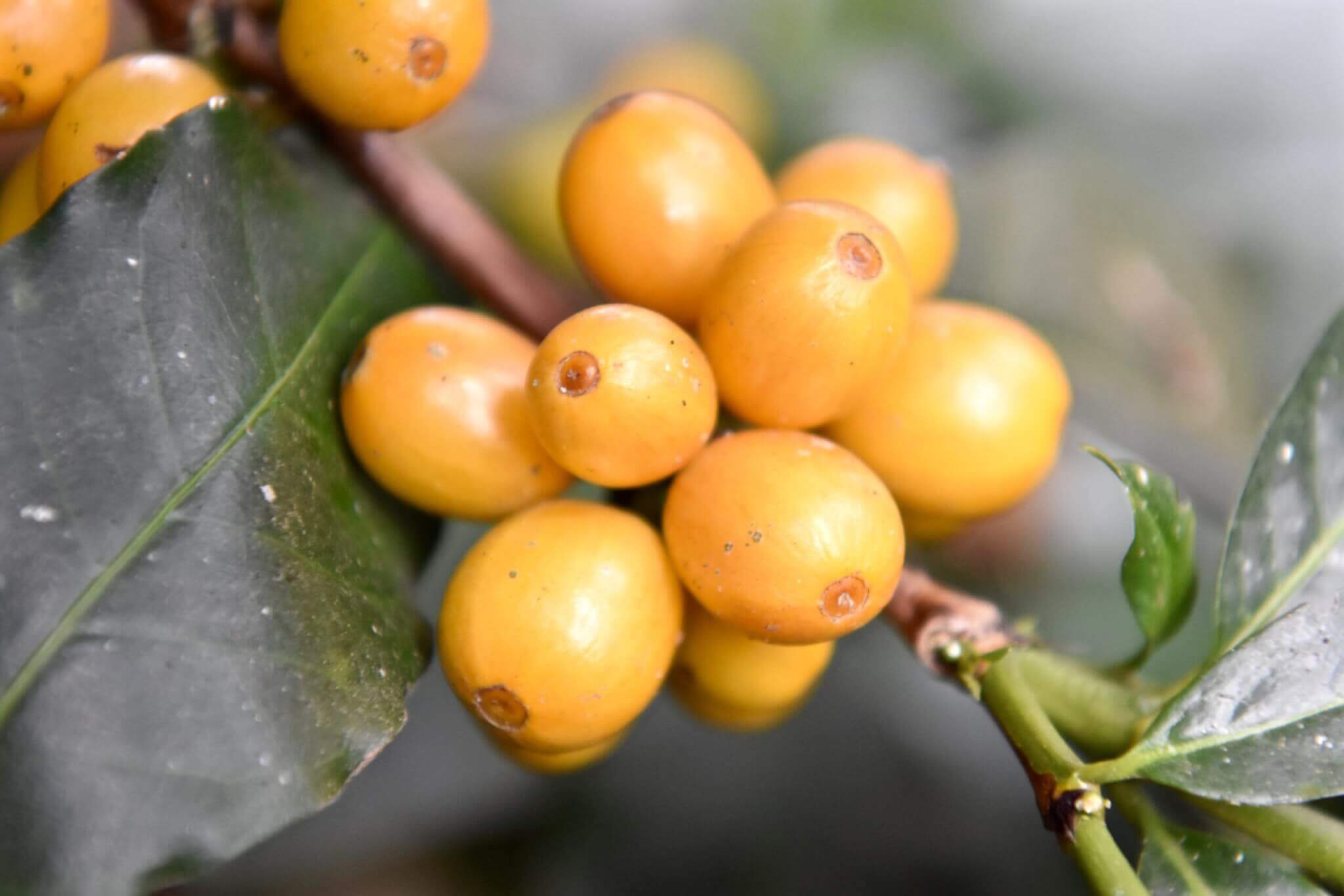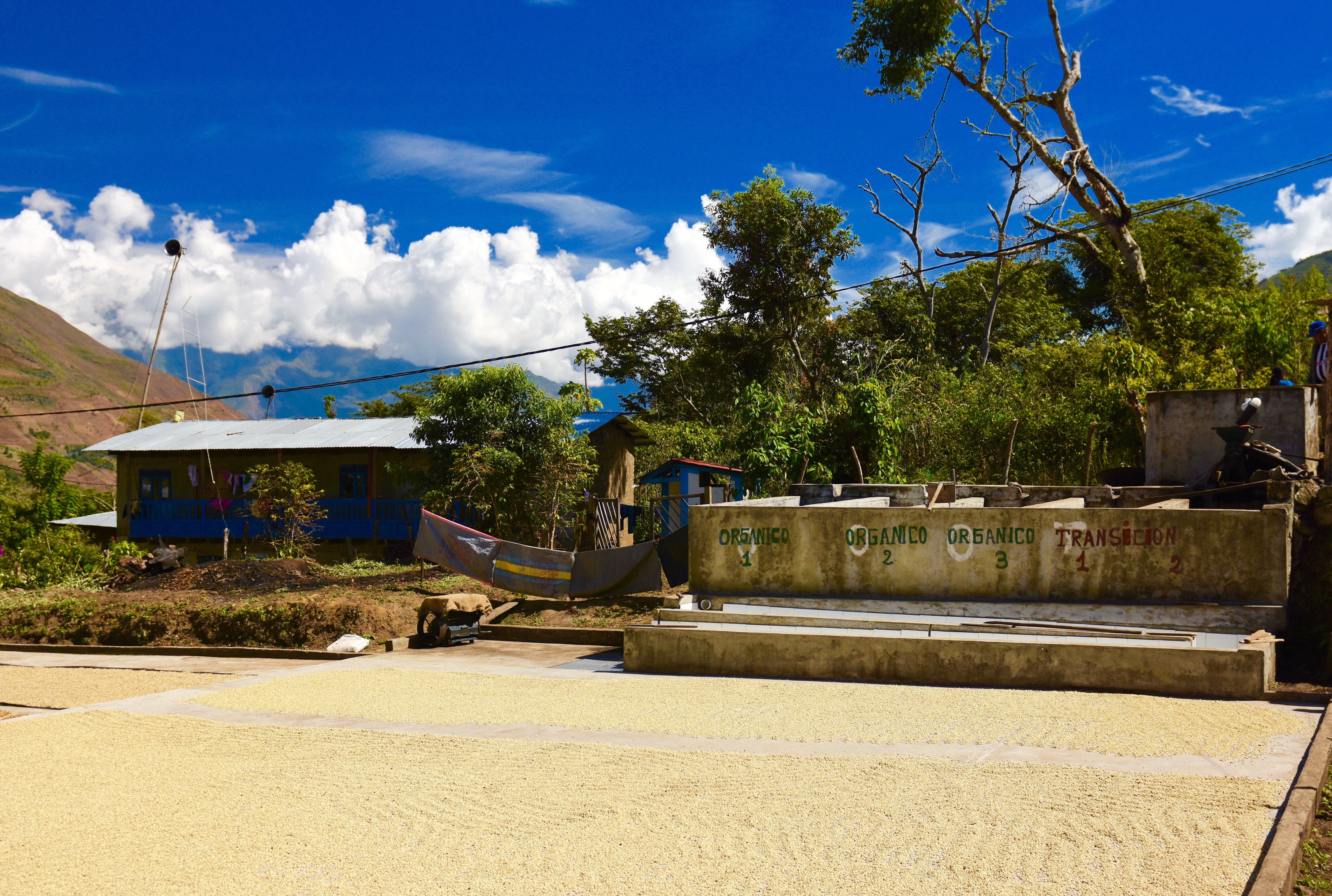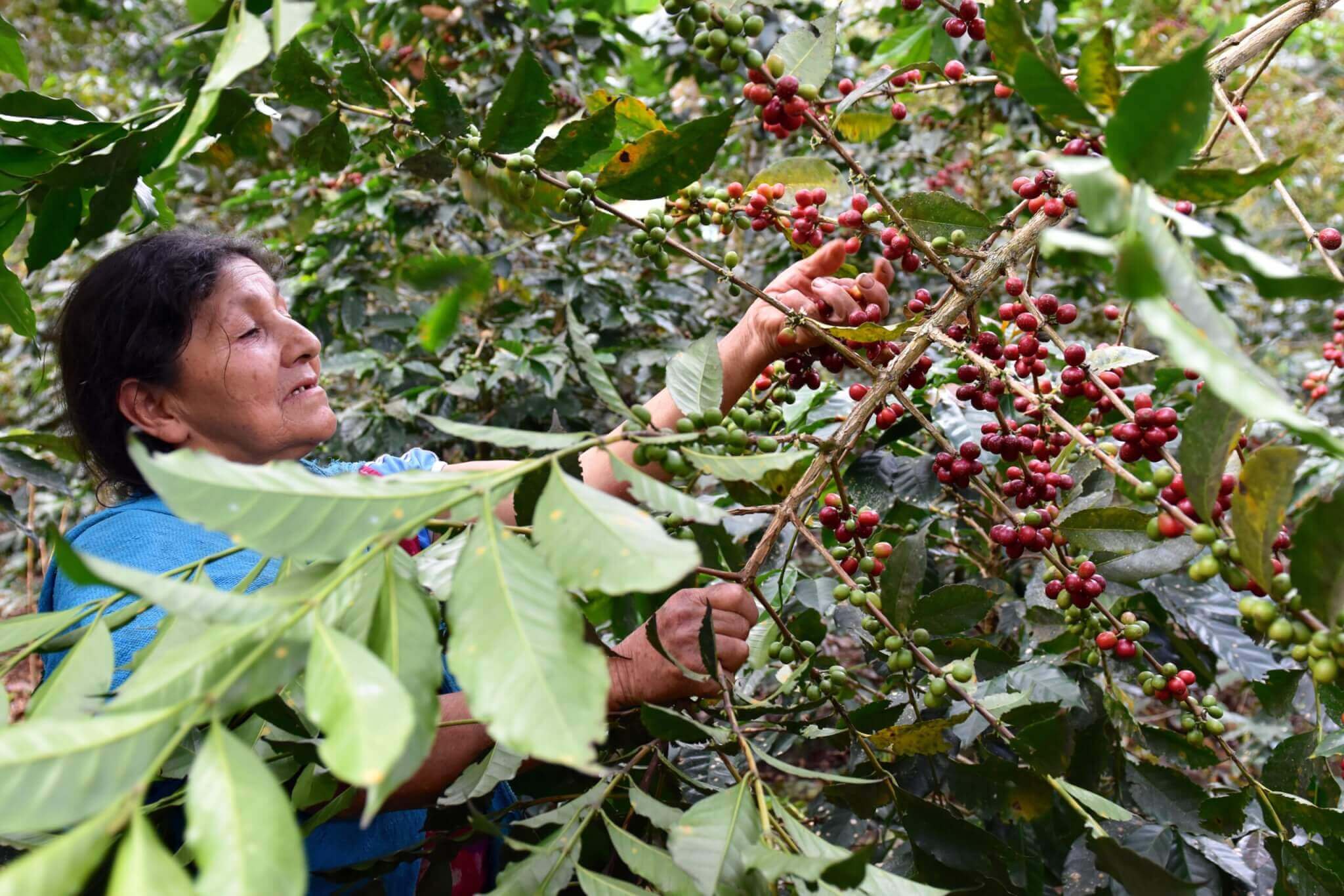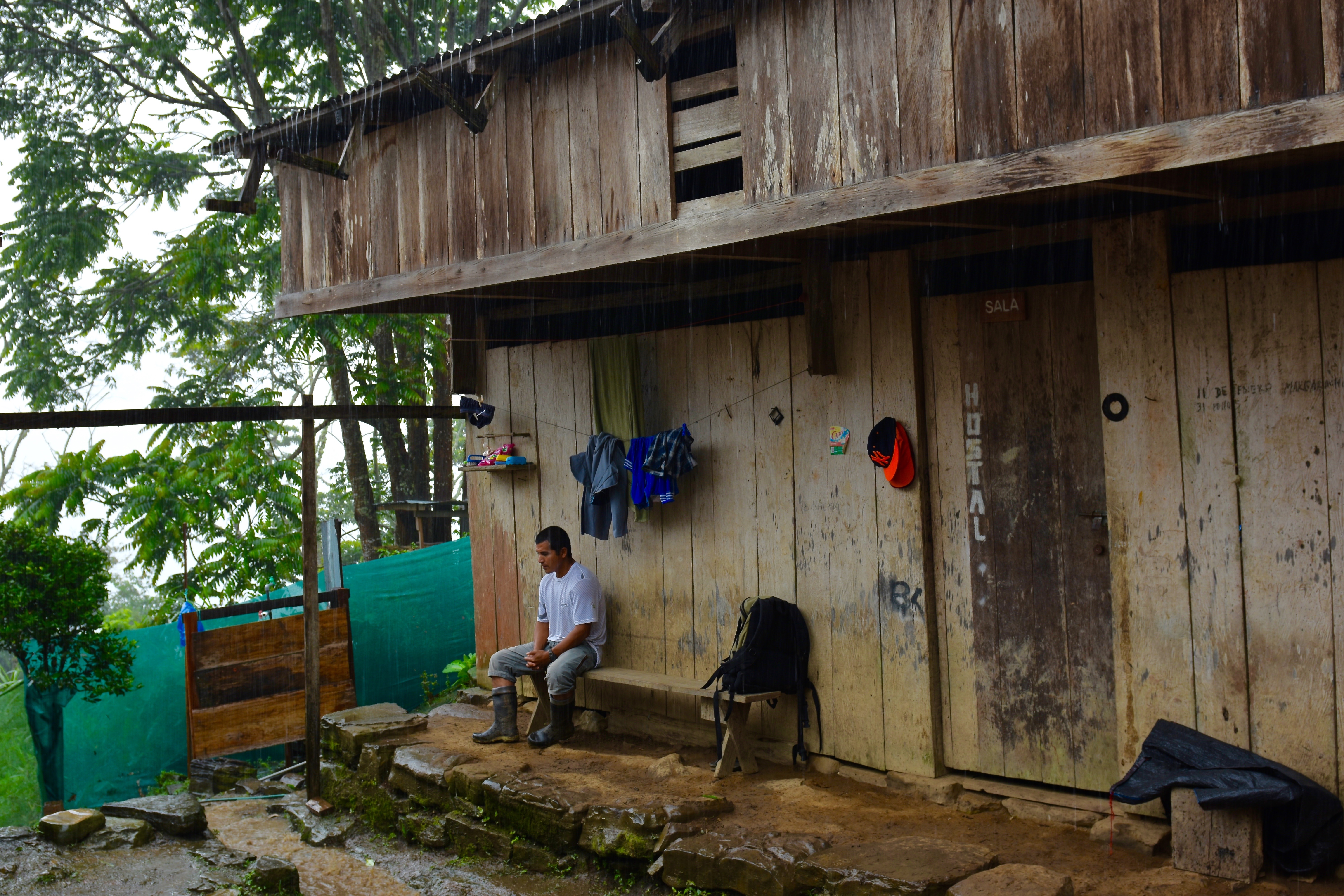Greetings from the Fox Den, where we are in the thick of the South American shipping season. Lots from Colombia and Peru that we approved earlier this fall are starting to arrive on both coasts, and we’re sprinting to keep up with the influx of new samples from later in the harvest. In Colombia, where the harvest season lasts much longer, our offerings are spread out more evenly and ship more consistently. We already have coffees available in the warehouses on both coasts and will continue to ship a couple of containers per month throughout the winter. The buying season in Peru is much more intense and compressed. With our primary focus on the southern departments of Cusco and Puno, the vast majority of what we buy is from the peak harvest in August/September/October. Our time is devoted to filtering and approving Peru samples in both Lima and Berkeley from September through November. We just received our last batch of Peru offer samples in our Berkeley lab and, if all goes according to plan, we’ll finish cupping and send our instructions to the cooperatives by the end of this month.

2016 POST-HARVEST REVIEW
We have put a new system of filtering samples in place in Peru for the 2016 harvest. It’s designed to make us more efficient at analyzing and approving samples, bulking lots and selecting micro lots, and, perhaps most importantly, at ensuring that stable coffees are milled, packaged, and shipped in the most timely manner.
The work begins with our field agent, Tibed Yujra, who is based in Puno and engages daily with the producers, cooperative leaders, millers, and exporters that we work with in Peru. Beginning right around the halfway point of the harvest season, Tibed begins collecting parchment samples from receiving stations throughout southern Peru. He takes physical measurements of all the samples to analyze water activity and moisture content, and excludes any samples that fall outside our specs. After this initial filtering, we meet up with Tibed in Lima to conduct a first round of cupping. All the coffees that we determined are “clean” at that point are brought back to the Berkeley lab for final analysis, where they are again measured for water activity and moisture content and cupped for a final time. It’s at this point that we determine which lots should be kept separate as micro lots, and which can be bulked by cooperative or region. Results and milling instructions are immediately sent back to the the cooperatives, and coffees are dispatched to be prepared for shipment. Tibed is waiting for these lots as they enter the dry mill to assure that a proper job is done. So far we’ve found this new system to be faster and better organized, and we’ve trimmed 2-3 weeks off of the entire process compared to last season.
Storage conditions for our coffees in Peru are ideal. The coffees are kept in very dry, cool climes prior to milling — between 2800 masl (Andahuaylas) and 3400 masl (Juliaca) — and most coffee is milled in Juliaca itself. Many of you who have bought Peruvian coffees from us in the past have remarked at the impressive longevity of these lots. We think the explanation is the excellent milling and storage conditions, along with Tibed’s ability to move coffee from the interior to the dry mill to port at what seems like the speed of light.
We spent time this season trying to solve the water activity issues that plagued some of our coffees from the 2015 harvest, and on our first trip to Peru this year we discovered some excessively fast drying practices in La Convencion, Cusco. Coffees were being dried on patios in direct sun in just 3 to 4 days and, while the coffees were reaching the proper moisture content in that time, it was wreaking havoc on the stability of those coffees. Even drying is more important for overall longevity and quality than a target moisture level, and water activity is a far greater measure of stability for us for this reason. We find that drying coffee at such an extreme rate doesn’t allow for an even distribution of water within the coffee bean, and we think slower drying times — we recommend a minimum of 8 days — equate to lower water activity, a longer lifespan, and greater freshness for green coffee.
At our request, the cooperative in La Convencion has installed raised beds in most of the washing stations they operate, and they are covering the parchment at midday to protect it from the ultra-intense sun. Where raised beds couldn’t be installed in time this season, they are drying parchment in larger piles to slow down the drying times. Overall, the results are markedly improved. We have adhered to a strict protocol with water activity this season, and only accept coffees that measure between 0.50 and 0.59. All coffees shipped this season are within this range.

CUSCO
Cusco is the future. It’s like a brand new origin for the ultra quality-focused buyers out there. We’ve written before about the monumental implosion of the old cooperative union. Now a handful of new cooperatives have risen from its ashes, and they’re looking to connect with the specialty market. We have built strong relationships with two of these cooperatives, and hope that more will come with future harvests.
Altitude in Cusco is supreme. I don’t know a region in Peru that has more 2000+ masl producing zones. Scratch that. I don’t know another coffee producing region in the world with as much 2000+ masl coffee. Our focus to date has been in the La Convencion area of Cusco, an absolutely gigantic swath of coffee-producing land. We’ve spent days on end driving in and around the producing valleys within La Convencion, seeking out the hidden crevices. They are the most epic areas in the coffee lands that I know.
The two cooperatives we currently work with in the department of Cusco are both on the southern end of La Convencion. Though they seem close to one another on the map, the distance between is quite far in reality. They’re separated by a rugged 10+ hour drive across altitudes upwards of 15,000 ft.
On one end of the journey, just over the Cusco/Apurimac border, is the Incahuasi Valley. The valley has an otherworldly beauty, like being on another planet. The feeling of escape from the rest of the world out there is unlike any other place I know. It’s just the producing community, the coffee, and us when we visit. No interruptions. After a long hiatus buying from this group, we got back into the swing of things two years ago. The connection between the producers, the cooperative leaders, and Red Fox is strong, and this year they will be our largest provider in all of Peru.
The three main communities within the Incahuasi Valley are Pacaybamba, Amaybamba, and San Fernando. Each has its own centralized wet mill where producers can deliver their cherry. A smaller portion of the associated farmers process cherry at their own farms in a similar fashion to what you’d encounter in Colombia: manual depulping, fermentation in small tanks or buckets, washing by hand, and drying on raised beds. Baseline altitude for most of the valley is 1900 masl, and the peaks above San Fernando are home to some of the 2200-2300 masl farms. Being isolated from most other coffee production in Peru means that the farms in Incahuasi are planted almost exclusively with Caturra and Typica. Small pockets of Bourbon still exist as well.
At the other end of the long drive is Quillabamba, Santa Teresa, home to the Sacred Valley itself. The cooperative we work with in Santa Teresa is just 12km from Machu Picchu. While visiting farms this past June, Joel, Tibed and I were introduced to farms hidden along a secret trail built as an escape path down the backside of the old Inca fortress. The path was “discovered” by the western world in the 1980s, but was well known and farmed by three generations of producers whose coffee we now buy. Altitudes are enormous here as well, exceeding 2100 masl at the top of this path and in the region in general. Small pockets of Bourbon and Pache can be found in greater Santa Teresa, though, like in Incahuasi, Caturra and Typica still reign supreme.
Wrapping up our second year of work with these folks, it’s safe to say that there is a lot of room for improvement, both in the infrastructure for coffee storage and drying and in the organization. A prior history of commodity buying means that this producing culture is just beginning to learn about and be motivated by quality. But we believe in the potential here, and we think this season’s offerings make that potential clear.

PUNO
I would love to have started this segment by saying that if Cusco is the future for Red Fox, then Puno is our old faithful. Unfortunately, the entire Sandia Valley, home to all coffee production in the department of Puno, has been ravaged by roya. In light of the large risk that roya presents, many producers have pulled up their coffee trees and replanted their farms with coca, which has a higher monetary value compared to coffee, and yields multiple harvests in a single year. The producers who have maintained their coffee production are delivering a third or even a quarter of the volume they used to produce.
If there’s good news in Puno this year, it’s that the farmers who have stayed true to coffee have galvanized their communities towards a greater commitment to coffee production. The Inambari Valley in particular, home to the Inambari and Tupac Amaru cooperatives, is still producing strong volumes of beautiful coffees. The San Isidro and San Ignacio areas of Tunkimayo are still producing beautiful coffees as well. Staying true to our commitment to these producers has allowed us to increase the volume of our purchases from 650 bags in 2015 to 800 bags this year. It’s not much coffee in the grand scheme of things, but we hope that number will grow as harvests stabilize and yields increase.
Though the climate in Puno may be slightly wetter than Cusco, the peak altitudes are similar. The Sandia Valley is home to a wealth of 1900+ masl coffee. Caturra and Typica are the common varietals, though Bourbon plays an even stronger role in the genetic makeup of coffee here, thanks to a UN-funded replanting project in the 1980s.

QUALITY
What we love most about Peruvian coffees are their unique flavor profiles. These are not Colombias and they’re not Bolivias. I’m hardpressed to compare Peruvian profiles to any other origin, unless it’s those floral Bourbons that remind me that the Ethiopian harvest is just around the corner.
Many of you have bought Puno coffees from us before, as that is the region that really put Red Fox on the map when it comes to Peru. These coffees are so so sweet, creamy, and balanced, with crisp but subtle malic acidity and elegant dark fruit character. ‘Honeycrisp apple’, ‘raisin,’ and ‘creme brulee’ are common descriptors for me. I’ve always found these coffees to be crowd-pleasers at well-roasted production levels. And they behave well in blends with other coffees, too. Punos are versatile and built to last for the long haul through winter.
The Cusco coffees are the lively ones, showing off that racy, ripe-fruit character that is so appealing on the cupping table. The Incahuasi lots demonstrate the whole range of yellow fruits from peach to mango, along with dried fruit notes of golden raisin and apricot. The sweetness of these profiles runs from brown sugar to wildflower honey. These are our brightest coffees from this origin.
I can’t stress enough that these are the coffees that always surprise people in late spring, when they help to bridge the gap between the winter menu and the arrival of new crop centrals. The high-altitude storage, swift shipping, and our extra attention to ensuring stability make these coffees something to count on year after year.
—
DELIVERY SCHEDULE
The first wave of shipments has arrived on both coasts and will be clearing into Continental Terminals and The Annex in the next week or so. These coffees were dry-milled and packaged in Juliaca at 3400 masl in early October before being sent to the port in Lima.
The second wave of shipments, which represents the bulk of our purchases from both regions, is either afloat or in the dry mill now, and will begin arriving on both coasts in early December. The second shipment of Puno coffees was milled in Juliaca in mid-November. The second wave of Cusco lots was prepared under Tibed’s careful supervision in Lima. These coffee spent a total of 12 days in Lima before being loaded and shipped from Callao.
A third and final shipment, exclusively from Puno, will ship in December. This coffee will also be milled and packaged at 3400 masl in Juliaca and will arrive just after the new year.
Most of the coffees on offer are organic certified, and many also have Fair Trade certification. Please inquire with us about which lots are certified.
